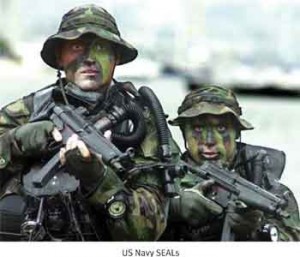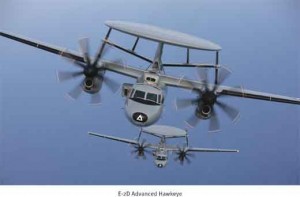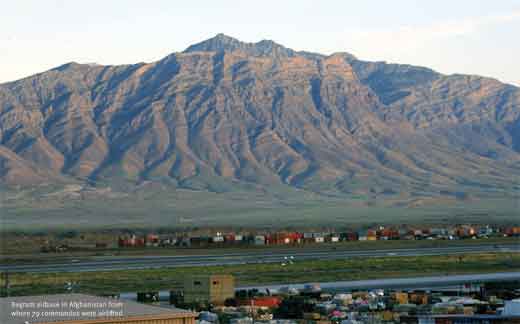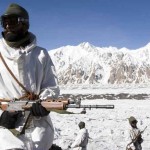The Pakistani town of Abbottabad is named after a Major James Abbot who established the district of Hazara in 1853. Known for its salubrious weather, Abbottabad is a quiet army cantonment town 50 km North East of Islamabad which has housed many army regiments including some of the Indian Army’s Gurkha battalions since the beginning of the 20th century. Devastated by an earthquake in October 2005, Abbottabad appeared briefly on world consciousness and then faded away from the media glare only to burst on to the world stage on May 02, 2011, when US Navy SEALs attacked the hideout of Al Qaeda leader, Osama bin Laden and killed him. Abbottabad’s place in history is assured for the foreseeable future.
On May 02, 2011, President Obama informed the world that in a special operation conducted by the United States forces, Osama bin Laden, the leader of the Al Qaeda terrorist group that was responsible for the 09/11 attack on the World Trade Centre, was killed. At around 0100 hours local time the Central Intelligence Agency (CIA) planned and carried out the attack on Osama bin Laden’s hideout in Abbottabad by a heliborne force of US Navy SEALs supported by CIA operatives on the ground. The SEALs were from the US Naval Special Warfare Development Group of the Joint Special Operations Command (JSOC).The attack force of 79 commandos were airlifted from Bagram airbase in Afghanistan in two specially modified Black Hawk helicopters of the 160th Special Operations Aviation Regiment (SOAR) of the US Army Special Operations Command. Three Chinook heavy lift helicopters were also used for air support. The operation was supported by fixed wing fighters as well as combat search and rescue helicopters of the US Air Force. One Black Hawk helicopter was damaged during landing and had to be destroyed by the SEALs to prevent any sensitive technology falling into the wrong hands. The mission was accomplished with no loss of American lives.
The US operation in Abbottabad has raised questions about India’s capability to carry out similar missions deep inside Pakistan. The Army Chief, General VK Singh and the Indian Air Force Chief, Air Chief Marshal PV Naik went on record stating that the Indian Army and the Indian Air Force had the capability to undertake such missions. Both might have been referring to the operational prowess of the Indian Army’s Para-Commandos and the ability of Indian Air Force’s helicopter pilots to fly below enemy radar coverage in low light conditions.
However, an Abbottabad type of mission is more than mere low flying in low light conditions and engaging a target. Success of such a mission is contingent on a combination of factors – primarily, the determination of the political leadership to authorise the operation being well aware of the diplomatic and political fallout of a possible failure, obtaining accurate intelligence of the location and layout of the target, penetration of Pakistan’s air defences undetected, delivering troops on an unprepared landing area, securing the assistance of local operatives, completing the mission and extricating the attacking force. To the media, which had built up Osama bin Laden’s image as a “super villain”, and to the US his elimination was seen as a national and inevitable triumph of good over evil.The Indian Army and the Indian Air Force do have valiant men willing to undertake such a dangerous mission but does the nation possess the political will and the politico-military- intelligence interface to execute such a mission?
Political Determination
The elimination of Osama bin Laden was the culmination of a political vendetta initiated by President Bush. After 09/11, he had vowed to hunt down the terrorists responsible for the attack and “smoke them out of their holes.” In October 2008, Presidential candidate Obama had pledged that “capturing or killing Osama bin Laden was a critical aspect of stamping out the Al Qaeda” but there appeared to be no movement in this direction during the early part of his Presidency. Domestic politics and foreign policy issues seemed to be the prime focus of the current American administration. In the recent past the US media had questioned the progress made on this pledge by President Obama during his election campaign but the President had given no details of how he would succeed in his mission.
It is now obvious that the Central Intelligence Agency had relentlessly been making efforts to track down and eliminate Osama bin Laden. Five months after taking over as the President of the United States, Barak Obama instructed CIA Chief, Leon Panetta to provide within 30 days a detailed operational plan to locate and bring to justice Osama bin Laden. As political stakes of such a mission are high, failure would have spelt the end of President Obama’s political career and his aspirations for a second term as President. Jimmy Carter paid the price for the failed mission to rescue American hostages in Iran. On April 29, 2011, President Obama signed the final order authorising the operation which was tantamount to issuing the death warrant for Osama bin Laden.Would any Indian Prime Minister issue such an order knowing fully well the implications of failure and placing at risk the office of the Prime Minister and the political party in power?
The Legality of the Operation
On September 14, 2001, the United States Congress officially declared war on terror by passing the Special Resolution 23, Authorisation for Use of Military Force in response to the 9/11 Attacks (PL 107-40). Section 2(a) of the resolution states, “The President is authorised to use all necessary force against nations, organisations, or persons he determines planned, authorised, committed, or aided the terrorist attacks that occurred on September 11, 2001, or has harboured such organisations or persons in order to prevent any future acts of international terrorism by such nations, organisations, or persons.” The President of the United States had the constitutional carte blanche to conduct military operations against any or all terrorists who have any connection, however slim, with the 9/11 attacks. This law allows the US President to use military power against individuals despite the earlier ban by President Gerald Ford and President Jimmy Carter on political assassinations. In effect, it gave the US President the authority to order the elimination of a terrorist organisation and terrorist leaders.
 Does the Indian Prime Minister or any other Government agency have the legal sanction to be the judge, jury and executioner of the enemies of the country? Kasab and Afzal Guru are still alive!
Does the Indian Prime Minister or any other Government agency have the legal sanction to be the judge, jury and executioner of the enemies of the country? Kasab and Afzal Guru are still alive!
Violation of Sovereignty
Pakistan and the United States are not at war; and are even allies in the war against terrorism yet America violated Pakistan’s sovereignty and carried out a cross border air strike within its territory. Technically, the mission was carried out by the CIA with US troops attached to the Agency and not by the US Armed Forces. Since CIA operatives participate in anti-terrorist operations in Pakistan, though in collaboration with their forces, this intrusion into Pakistan was conveniently not seen as an act of war. In any case, Pakistan cannot declare war against the United States. In response to General VK Singh and Air Chief Marshal PV Naik’s statements about India’s ability to carry out a strike mission against terrorists, Pakistan Army Chief General Ashfaq Parvez Kayani called a meeting of his corps commanders in Rawalpindi and warned that the Generals take “a serious note of the assertions made by the Indian military leadership about conducting similar operations. Any misadventure of this kind will be responded to very strongly. There should be no doubt about it.”
Was it sabre rattling by Pakistan or can the Indian Government order an Abbottabad type operation violating Pakistan’s sovereignty without an escalation to war?
Joint Service Operations
The success of the Abbottabad mission can be largely attributed to correcting the mistakes made in April 1980 during Operation Eagle Claw ordered by President Carter where an ad hoc joint task force was tasked to rescue American hostages being held in the US Embassy in Teheran. The highly complex mission was planned over two nights and involved six helicopters landing at a hiding site near Teheran, a ground assault of the American Embassy building, capture of the Manzariyeh air base and recovery of the hostages by a C-141 heavy lift transport aircraft. The mission was a complete disaster and the operation had to be called off due to the collision of a helicopter and a C-130 Hercules aircraft at the first staging post, Desert One. A high powered team led by Admiral James Holloway (Retd.) made an independent appraisal of the rescue mission for improving future US counter terrorist capability and conducted an examination of the planning, organisation, coordination, direction, and control of the mission to recommend improvements in these areas for operations in the future.
The Holloway report’s main recommendation was the establishment of an independent counter terrorist agency with permanently assigned personnel and assets. Over the years this evolved into the US Joint Special Operations Command with its own land, sea and air assets placed under a unified command with responsibility for conduct of all special operations. Currently, the Indian Army, Navy and Air Force train personnel for Special Operations but they are used more as an adjunct to the normal operations. If India was to form an independent Special Operations Command it would be at the cost of depleting existing Army, Navy and Air Force units or creating a new force. Both options would trigger intense turf battles amongst the Services.
Does India need to have a dedicated Joint Operational Command and if so, how should it be formed?
Real Time Intelligence Gathering. The raid on May 02, 2011 was the culmination of a decade of specialised electronic and human intelligence gathering by a host of agencies. Amongst other agencies, the CIA was backed by the efforts of the National Geo-Spatial Agency which specialises in electronic imagery and maps and the National Security Agency which covertly watches and listens to communications around the globe. Osama bin Laden realised that America could tag him electronically if he used sophisticated communication devices and he therefore relied only on couriers to convey his orders. The couriers provided him a cocoon of safety and reduced the chances of detection but the courier had to use electronic communications to pass the messages leaving a chink in the armour for the Americans to exploit.
The United States used Enhanced Interrogation Techniques, an euphemism for sophisticated torture of detained Al Qaeda terrorist suspects to identify the Al Qaeda couriers trusted by Osama bin Laden. In 2002, interrogation of an Al Qaeda detainee had thrown up the name of a courier named, Al Kuwaiti but this appeared to be an assumed name. This fact was corroborated in 2003 during the interrogation of Khalid Sheikh Mohamed who was reputed to be the operational chief of the Al Qaeda. In 2004 another Al Qaeda prisoner told interrogators that Al Kuwaiti was close to Osama bin Laden but the CIA was not able to identify the courier. It took another three years of intensive action to identify Al Kuwaiti but they could not locate him. The CIA did not learn the courier’s real name till 2007 but it was only in 2010 that the Agency could find him and track him to the compound in Abbottabad.The compound and the fortified house had all the characteristics of a safe house but there was no confirmation of the presence of Osama bin Laden. US Intelligence may have initially discounted the presence of Osama bin Laden due to the location of the house in the midst of a army cantonment and Pakistan’s official stand denying the presence of Osama bin Laden in their country but yet the CIA agents rented a house in Abbottabad to monitor at close quarters the compound. The compound was also under surveillance by satellite and drones but the CIA was still not able to conclusively establish that Osama bin Laden was holed up there.
Does India have the means for coordinating the intelligence inputs from different agencies and the assets for real time intelligence gathering by satellites/ drones and agents on the ground so necessary for such an operation?
Intelligence Sharing The Joint Intelligence Committee of the Indian Government analyses data from the Intelligence Bureau, Research and Analysis Wing and the Intelligence Directorates of the Army, Navy and Air Force but this arrangement is not adequate in the war against terror. Post the Mumbai terrorist attack, setting up a National Intelligence Grid was mooted and in July 2009 the Union Home Minister said it would be set up by September 2009. After a protracted delay, in June 2011 the Cabinet Committee on Security accorded an in principle approval and the system is likely to on stream by 2014. The system is to provide information sharing between security/intelligence agencies, military intelligence and law enforcement agencies but inter-ministerial differences exist and these need to be resolved before the system can become fully operational and effective.When will India have a fully functional networked architecture for seamless integration and sharing of intelligence inputs from different agencies?
 Realistic Training The US Navy SEALs carried out extensive and realistic training in the United States and at Bagram airfield in Afghanistan before the mission. A replica of the suspected Osama bin Laden house was built and the attacking troops were fully familiar with the layout of the building. The SEALs knew the room likely to be occupied by Osama bin Laden and electronic and ground based surveillance had even established the number of occupants in the house.
Realistic Training The US Navy SEALs carried out extensive and realistic training in the United States and at Bagram airfield in Afghanistan before the mission. A replica of the suspected Osama bin Laden house was built and the attacking troops were fully familiar with the layout of the building. The SEALs knew the room likely to be occupied by Osama bin Laden and electronic and ground based surveillance had even established the number of occupants in the house.
Will Indian intelligence agencies be able to provide real time intelligence to the troops to enhance the quality of realistic mission specific training?
The R&AW lost the ability to gather human intelligence in Pakistan after Prime Minister IK Gujral wound up covert operations and dismantled R&AW assets…
In-country Operatives. In Pakistan there is a tacit understanding between the CIA and the Directorate for Inter Services Intelligence (ISI) and the two agencies share information from time to time. In the CIA’s hunt for Osama bin Laden, the capture of Khalid Sheikh Mohammed in a joint raid with CIA operatives provided a vital breakthrough. The R&AW lost the ability to gather human intelligence in Pakistan after Prime Minister IK Gujral wound up covert operations and dismantled R&AW assets in an effort to improve relations between India and Pakistan. Many of these operatives which had been built up over the years were eliminated by Pakistan. An Abbottabad type mission can be accomplished if “in country operatives” provide vital information or if Pakistan provides intelligence inputs of terrorists and their camps.Will the ISI and India’s Research and Analysis Wing (R&AW) ever achieve any level of cooperation in conducting anti-terrorist operations in Pakistan?
A Top-Down Approach. India can carry out an Abbottabad type of mission but the questions raised in the preceding paragraphs should be addressed if an acceptable degree of success is to be assured. India needs a clearly articulated strategic politico-military policy for such operations, an independent Joint Special Operations Command with integral land, sea and air assets permanently assigned to them, and an operational doctrine for Joint Special Operations. Comprehensive mission planning would be possible only if intelligence agencies provide real time intelligence and accurate inputs for operations. The force will be a deterrent when the enemy knows that India possesses the capability and will not hesitate to use the Special Forces for overt and covert operations.
The Special Forces of the Indian Army, Navy and Air Force constitute the end of the spear, but without political will, strategic direction and real time intelligence launching an Abbottabad type mission in the present environment would be a politico-military disaster.






All I learned from different websites across the internet was this. On all three major wars that happened between India and Pakistan, Pakistan Air Force(PAF) had upper hand over our Air Force(IAF). So how could the generals say that Indian Air Force is capable of flying below radar range into pakistan. We learn from 100’s of websites that the PAF is well trained and they have better pilots. One thing I read on the internet that during 1971 war a pilot took off in his aircraft below radar range into Karachi and destroyed two aircrafts that were standing there. One of them was an American’s who came to Pakistan to train the PAF Personnel. My question is how many pilots in our country are capable of doing that. It doesn’t matter we have SU 30 MKI or Rafale in future. It is the pilot skills that matters. But I concede that we are not in a dogfight era. But still pilot skill applies right?
I wonder for this reasons the IAF always orders for twin seated a/c’s instead of single seated a/c’s – that might make the job easier – where other country’s pilots are trained to tackle that single handedly. Just look how much longer the time past since the winner was announced in MMRCA deal. Still they are talking and talking and they will finish talking when the chinese are done with their J20 and pakistanis had their hands to J10s……
Commodore Mennon’s highlights the hard work that went into Operation Geronimo. The US success changed the political outcome for the region and America. The most important lesson for India is that it must develop such capabilities to punish Pakistani sponsored terrorism on India. Pakistan seemed to be conducting these acts of terrorism with a sense of impunity since they know that any retaliation from India will have to be in the form of a declared war. Indian leaders lack the back bone to even think along those lines because of the nuclear retaliation threat from Pakistan if there is a war. In essence Indian military might has been neuterred or made impotant. It is time, the military planners put their heads to gether and make it a priority to create India’s Gernimo as a potential threat to Pakistan should they think about embarking on a new project, namely, Mumbai 2.
Could not agree more that conducting operations like Operation Geronimo, CIA needed huge intelligence. It took them ten years for them to locate Bin Laden but they finally did. Pakistanis are scratching their head for the last one year who betrayed him. He had been well hidden, that is what ISI thought.
We have had bad leaders in India who thought that they could dismantle critical operational units of RAW to please Pakistan. Did it work?
No, it did not work. One of their unit staged Mumbai attack and India had no answer to that covert operation, other than starting a full scale war.